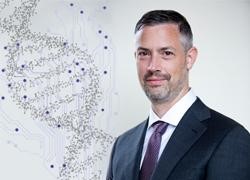
Dr. CALEB BASHOR
Postdoctoral fellow at MIT
ENGINEERING SYNTHETIC REGULATORY SYSTEMS USING NATURALLY INSPIRED DESIGN PRINCIPLES
ABSTRACT:
We have recently demonstrated that two engineering principles inspired by natural regulatory networks can be used to create new classes of synthetic circuitry in eukaryotic cells:
1) In eukaryotic gene networks, transcription factor complexes that undergo cooperative self-assembly carry out non-linear regulatory operations involved in cellular decision-making. We showed that engineered cooperative assemblies can be used to predictively tune between regimes of linear and non-linear regulatory response for single- and multi-input circuit assemblies, and can be adjusted to control dynamic behavior.
2) In eukaryotic signal transduction networks, specificity of kinases and phosphatases is often dictated by their regulated co-localization with substrates. We exploited this phenomenon to create synthetic signaling cascades in which network links are realized through successive phosphorylation-driven co-localization events. Our synthetic signaling pathways activate on a fast timescale and can be coupled to arbitrary receptor inputs, allowing us to rewire the way in which cells can sense their environment.
BIOGRAPHY:
Caleb Bashor received his Ph.D from the University of California at San Francisco, where he used synthetic biology approaches to study scaffold-mediated signal transduction in the yeast mating pathway. As a postdoctoral fellow at MIT, he developed engineering grammar for constructing both transcriptional and signal transduction circuits in mammalian cells. He started a research group at Rice in 2018 in the department of Bioengineering, which focuses on using synthetic regulatory circuitry to engineer new cell-based applications in human cells.



